
The Best of Everything
Encyclopedia Entry • Films Main
The Boob
1926

Critics' Reviews • Our Reviews • Movie Posters • Lobby Cards • Misc. Images
Click here to see photos from the film.
|
US release: 5/17/26. (Released as "The Yokel" in the UK.)
Warner Archive DVD release: 8/4/09. Warner Archive Blu-ray double-feature (with "Why Be Good?"): 3/26/24 Box Office Total Gross: $183,000. (Loss of $30,000.) Cast: Gertrude Olmstead, George K. Arthur, Joan Crawford (as "Jane," a Prohibition agent), Charles Murray, Antonio D'Algy, Hank Mann, Babe London. Credits: Adapted by Kenneth Clarke from the story by George Scarborough and Annette Westbay. Director: William A. Wellman. Titles: Katherine Hiliker and H.H. Caldwell. Camera: William Daniels.
Plot Summary:
Peter Good, an idealistic young farmhand, finds that Amy, the girl of his dreams, does not requite his love, and goes forth in search of adventures. He arrives at a roadhouse to which Amy has been brought by Harry Benson, a young city sport wanted by the authorities for bootlegging, and climbs into the car in which Amy is being abducted. A running fight ensues, which ends when the car crashes, slightly bruising all occupants. Harry is taken into custody by dry agents and reconciliation between Amy and Peter follows. ~Studio press book (from AFI listing) This early William Wellman directorial effort stars George K. Arthur as the title character, an incredibly naïve farmhand named Peter Good. Spurned by Amy (Gertrude Olmstead), the girl he loves, Peter sets out to prove that he isn't a boob. He joins a posse hunting for a gang of bootleggers, and sure as shootin' he rounds up the bad guys single-handedly. The film's highlight is an elaborate production number set at a burlesque theater, where scores of contract starlets have their clothes removed with the help of wires and pulleys. Billed third in the cast is Joan Crawford, whom MGM was obviously preparing for bigger and better things. ~Hal Erickson, All Movie Guide
Notes: The working title for the film was I'll Tell the World (Film Daily, Variety).
IMDb page Movies Silently review Wikipedia page |
Baltimore Sun (1926) A piece of junk.... The company has simply covered itself with water and become soaking wet, for this tale of a half-dumb boy who turned prohibition agent to convince his girl he had nerve is as wishy-washy as any pail of dishwater.
Film Daily (1926) The development is of such an episodic nature...that the initial idea is eventually lost in a variety of comedy gags, slapstick and otherwise...
Movies Silently blog (Fritzi Kramer, 2015; read full 1600+ word review with screen shots) The Boob is a minor comedy from the mid-twenties but it is
historically significant for two reasons. First, it’s an early appearance of
Joan Crawford and the last of her second banana roles to be released before her
rapid rise to stardom. (It was made when she was just another wannabe but
shelved and released once her career was just catching fire.) Second, it’s the
picture that got William Wellman fired from MGM. The Boob is one of those pictures where a lot of stuff happens but nothing actually gets accomplished. Instead of an actual story or funny gags, we are simply shown a tedious string of skits that don’t fit together very well. The Boob is only an hour long but feels twice that length.... In the end, the only performer who escapes this mess unscathed is Joan Crawford. Her time in the film probably totals five minutes (which may be why she was such a success in this turkey) but you can see at once that there is a star in the making. She’s fresh, charming and looks fantastic in her silky duds. I do wish she had looked up at the camera once in a while but you can’t have everything.... |
If you've seen The Boob and would like to share your review here, please e-mail me. Include a star-rating (with 5 stars the best), as well as a photo or avatar of yourself to accompany your review and any of your favorite titles from the film.
|
Rating:
Holy smokes, everyone! This film isn't THAT bad! Though it did lose money ($30K), and a month after its release in May 1926, Joan herself wrote to an early pen-pal:
(But
then Joan also disliked Rain and Johnny Guitar after
reading the reviews of the time, so she's not quite the reliable
critic...)
Cactus is good for multiple slapstick interludes throughout the film: The scene where Cactus "inspires" Peter to action (and then gets him dressed up in his own old-time Western duds, which Amy later mocks as "Tom Mix clothes") is a clever bit of early film technology: As Cactus reminisces and he and Peter look at a Western painting on the wall, the picture comes to life cinematically with a darker-haired, younger Cactus routing said "Injuns." Cactus's love for alcohol is also funnily portrayed in this Prohibition-era (1920-1933) film: At this early juncture, he stops to take a drink---but not before ostentatiously holding his hat in front of his face to block the view from the camera AND the Prohibition-era film censors. (Similar to today's proscription against showing alcohol consumption in TV commercials---even when advertising alcohol.)
In these early scenes, we're also introduced to "Ham Bunn," a black child of about 8 (uncredited), who's a comedic supplement to Cactus. Reviewers today seem extremely upset by the so-called "Negro dialect"---but...why aren't they equally as upset by the overt "Southern cornpone dialect" of Cactus? Could it be that country folk in the South, whether black or white, both spoke similarly at this time? Or perhaps that film-title writers from New York City might have exaggerated both? Whichever the case, I complete disagree with the post-2016 leftist "racism" charge. Even with "dialect" lines like, "I ain't skeered but I don't jest feel at home. Let's us move!" while in a graveyard, Ham Bunn is a much braver, and smarter, little character than either Cactus or Peter---going off to battle to help Peter, and he's only a kid! (Whereas Cactus only runs after Peter because he left a bottle of booze in the saddle-bag he lent him!)
And,
come to think of it, where are the old women protesting the
"Home for Impoverished Women" scene---Peter has given
an old woman a ride on his horse, and when he drops her off and
hands her a flower, the other old women are aghast: "Flirtin'!
Sakes alive, sech carryin' on!"
Not to mention the scene a few minutes later where Cactus shows
up at the home and runs away in fear when he sees the old womens'
contorted faces literally (funnily) pressed against the glass looking
out at him!
Once
all characters have arrived (or nearly arrived) at "The Booklovers'
Club," where the bootlegger Harry has taken Amy for a date
that evening, there are a few entertaining shots and scenes. A closeup
of books on the shelves reveals: Scotch Essays, Vodka:
The Spirit of Old Russia, and Gunga Gin. Dinner served
to one couple consists of celery sticks and a runaway olive (another
camera trick). And there are dancers who start out in full, flouncy
1890s dresses, which disappear at the pull of a keg-tap to
reveal bloomers.
While
third-billed after Olmstead and Arthur, Joan has nothing to do here
except briefly make suspicious "Prohibition agent" faces
and look very pretty. Olmstead was right when she said, according
to Joan (Essential Biography), "Why, they could have
given the part to any unattractive character actress!"
 Tom C. (December 2021) Tom C. (December 2021)Rating:
The Boob (1926) is not a very good movie, as detailed in a very entertaining
review by Fritzi Kramer of the Movies Silently website (link given above on this BOE page). The
Boob's major flaw is, I think, leading actor George K. Arthur as Peter
Good. Arthur has roles in other Crawford silents like Sally, Irene and
Mary and Pretty Ladies (both 1925), Bardelys the Magnificent (1926), and
Spring Fever (1927). His most substantial role in a JC flick is Chunky,
paramour to Norma Shearer's bad girl persona in Lady of the Night,
Joan's inaugural movie. Arthur strikes me as an actor who, while a good
supporting cast member, doesn't have the range to carry an entire
picture, even only an hour-long movie like The Boob. Other
roles in this film go to Gertrude Olmstead (Amy), whose claim to fame is being
replaced as female lead of Ben Hur (1925) by May McAvoy. Charles Murray
is a grizzled cowpoke who helps Arthur, when he's not looking to score a
drink. Murray's sidekick is an African-American boy, Ham Bunn, whose
portrayal is anachronistic and cringe-worthy at best. Tony D'Algy, as Harry Benson,
is the villain and contender for Amy's affection. (The dancers in the speakeasy scene
of the picture are courtesy of Fanchon and Marco,
brother and sister producers; their
story is nicely described on fanchonandmarco.com.) The
story revolves around Peter's attempt to win the heart of his crush
Amy, who has become enamored with Harry and his suave city
slicker ways. Unbeknownst to Amy, Harry is in the illegal
hooch racket (as indeed all 1920s movie bad guys seemingly were). To
prove he's no boob, Peter decides to bust this gang of n'er-do-wells,
following up a tip from that most unimpeachable of sources, a gossipy
old lady. It's in this scene---roughly 28 minutes in---that Joan FINALLY appears as Jane, a government revenue agent who is
also tracking the bootleggers. For reasons unbeknownst to anyone, Jane
enlists the help of Peter and they eventually crack the case. Bad guys
go to jail, and Peter wins his rewards: $5,000; the affection of Amy; and
best of all, a peck on the cheek from lovely Joan. Joan
is in three scenes: The first is the aforementioned speakeasy scene in
which she intrepidly eavesdrops on the bad guys and finds out the
location of their hideout. (She looks smashing in a feathery dress.) Her
second scene is with Arthur in a graveyard. (Why Joan/Jane doesn't slap
Arthur/Peter and tell him he'll be arrested if he interferes with an
official investigation, I'll never know.) Her final scene is when the bad guys have been busted.
(She looks great
in Jazz Age duds, complete with cloche hat.) All told, maybe 5 minutes of
screen time, which is perhaps a blessing, given that this movie is such a
turkey. Joan
herself thought this movie a dud, as she wrote in response to an early fan letter on this website (June 14, 1926). I
read that the movie was initially filmed in 1925 but shelved and released in 1926 to capitalize on
Joan's growing star power. Seems plausible given that she was named a
WAMPAS baby star in early 1926. Overall,
like nearly every movie Joan made in 1925, The Boob only has minor
glimpses of our heroine. The 2009 DVD cover features Joan, despite her small role,
and I think after nearly a century since The Boob was made, Joan may be
the only reason to watch this film. She's very pretty and has the only
role that is not a caricature. Despite
the badness of this movie, there's still high-powered talent behind the
screen. Sets were designed in part by Cedric Gibbons, who not only
designed the Oscar statuette, but went on to win it 11 times! William
Daniels was cinematographer. William Wellman was director. Like Joan,
all three didn't let this movie derail their careers and went on to win
Oscars in their respective specialties. Veteran actor Charles Murray once told Joan that she should use roles, even minor parts in bad movies like this, to hone her craft. If true, I think Joan's subsequent career shows that she took such advice to heart. So, perhaps we should give this movie a half-star for that. Add in a half-star for the story, for an aggregate 1 star rating.
 Jon Denson (December 2007) Jon Denson (December 2007)Rating:
The Boob is a picture with no artistic value or emotional resonance. It is purely a slapstick comedy, and will be unsophisticated to modern viewers. It is the story, if it can be called that, of a young man (who, incidentally looks like a boy) who goes to town in order to capture bootleggers. There is a motive for this; the young man's childhood sweetheart has run off with a man suspected of shady dealings, and they frequent a speakeasy called "The Booklovers." There is a neat twist in that booze is poured from decanters in the shape of books, a nice trick to fool those prohibition agents. Joan Crawford is a flapper in this, although she doesn't dance, and her screen time is decidedly short. She does not appear until 30 minutes after the flick has started, and is probably on-screen no more than five minutes over this course of the film. The most that can be said of her performance is that she was beautiful. She is in full 1920s style here, with bob and cupid's bow mouth. Her dress in one scene has elaborate feathers and is quite glamorous. Overall, the picture is a low-rent affair, and its only item of interest is the early (although brief) appearance of Joan Crawford.
|

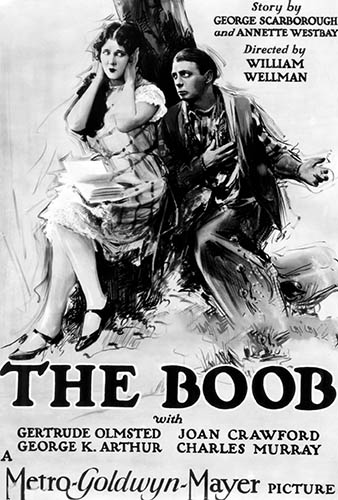
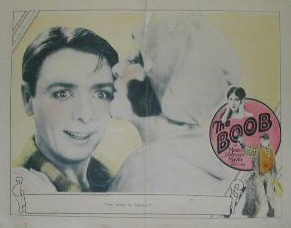
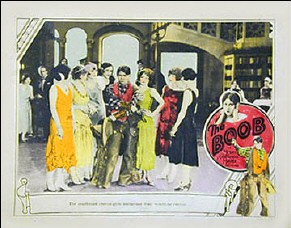
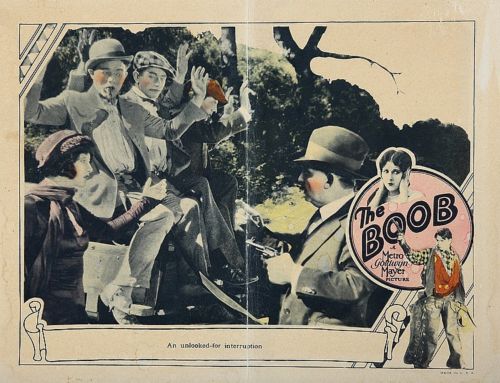



Above: US newspaper ads. Below: US herald covers and centerfold.

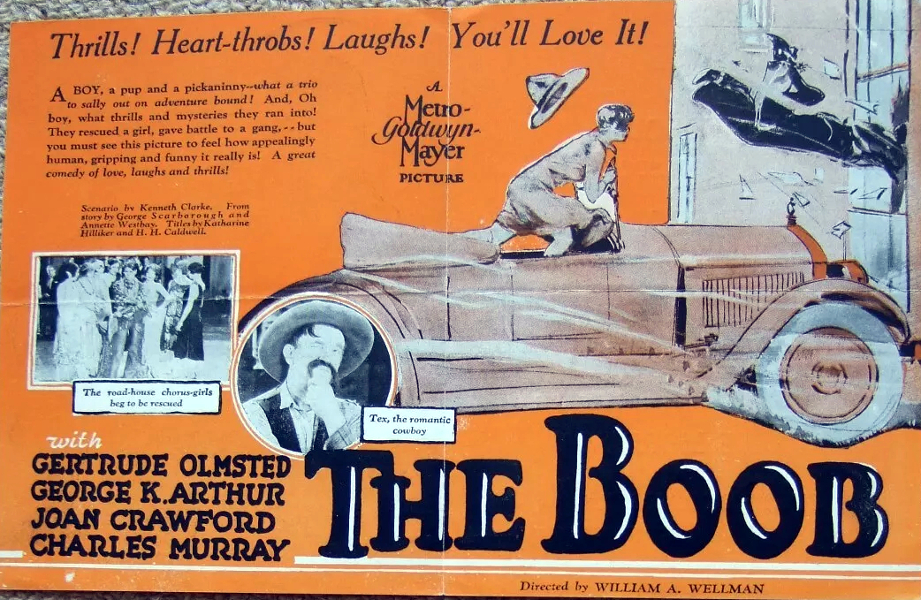
The Best of Everything
